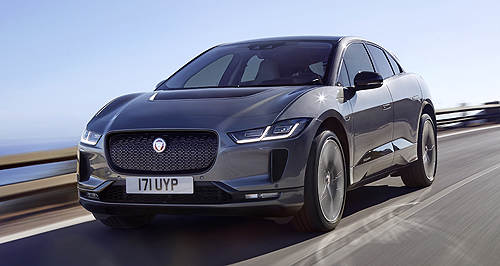Make / Model Search
News - General News - Electric VehiclesEVs to have 15 per cent sales share by 2030: AbmarcThe price is right: The BMW i3s BEV is currently priced from $69,990 before on-road costs, but such models are expected to rival their ICE counterparts in cost by 2025. Price parity with ICEs in 2025 could see EVs claim 15 per cent sales share by 203022 May 2018 ELECTRIC vehicles (EVs) are expected to account for about 15 per cent of Australian new-vehicle sales by 2030 if price parity with internal-combustion engines (ICEs) is achieved by 2025, according to automotive testing and validation company Abmarc.
In a keynote address at the 2018 Australasian Fleet Conference and Exhibition in Melbourne last week, Abmarc managing director Natalie Roberts revealed the company’s local new-vehicle sales forecasts for the next two decades.
“Our projections, assuming we have price parity from 2025 out to 2030, is that by 2030 we will have about 15 per cent electric vehicles with new-vehicle sales … that’s a reasonably high uptake,” she said.
“If we don’t achieve price parity, it will be much lower than that – about one per cent is what we’re forecasting with a $5000 price premium.
“If you were to ask what the sales are today of electric vehicles, it’d be about 0.1 per cent or less, so one per cent is a big increase. It will be interesting to see what happens with the price of electric vehicles in the future.”
Only 2284 EVs were sold in Australia last year, following 1369 sales in 2016, 1771 deliveries in 2015 and 1332 registrations in 2014.
Ms Roberts cautioned that if car-makers and governments are not willing to invest in and take a loss on EVs in the short term, they are unlikely to ever rival internal-combustion engines in average cost.
“If the price of (EV) resources is higher than anticipated, we will not achieve price parity – it is highly dependent on the governments (and car-makers investing in) the battery (technology),” she said.
According to Electric Vehicle Council chief executive officer Behyad Jafari, lithium-ion batteries currently account for about 50 per cent of an EV’s total cost, but this is projected to fall to just 10 per cent by 2025, helping to achieve price parity.
Ms Roberts added that pricing equality more or less already exists in premium segments, where major players Tesla and BMW will soon be joined by Jaguar, Audi and Mercedes-Benz.
“If you wanted an electric car in the luxury segment today, you probably wouldn’t being paying much more than a conventional internal-combustion engine,” she said. “We see this with Tesla and BMW 5 Series (PHEV) – they’re going to be reasonably similar pricing.
“As we move forward, it will be these more expensive cars (that drive growth), and that’s where a lot of these electric-car announcements have been made, (in) the prestige and luxury segments and some larger soft-road SUVs.
“Over time the vehicles will become more affordable in the medium and small categories, so when they become more affordable, they also become more accessible for the broader community.”
Mr Jafari echoed this sentiment, stressing that more affordable EV models are already available overseas but not in the Australian market.
“The question for us in Australia is how can we incentivise these global players to start bringing their products to our country, so we are able to go through the transition to zero-emission vehicles as well,” he said.
Mr Jafari suggested that fleets – which have been responsible for 45 per cent of new-vehicle sales this year – should set a 100 per cent target for their EV rollout while buying as many EVs as they can that would, in turn, encourage car-makers to penetrate the market earlier or risk losing sales.
Specifically, Abmarc projections suggest EVs will account for about 29 per cent of passenger-car sales in 2030 – almost double the anticipated EV share of total new-vehicle sales – while about 10 per cent of SUVs are forecasted to be emissions-free.
Conversely, light-commercial vehicles are projected to have a much lower EV share in 2030, at two per cent, due to the expected continued dominance of diesel vehicles (92 per cent), which are better suited to commercial work thanks to their lower cost and higher payload.
If these forecasts prove to be accurate, only about nine per cent of vehicles in Australia’s fleet are expected to be EVs by 2037, while petrol (53 per cent) and diesel (33 per cent) vehicles are set to remain prominent. Australia currently has about 17 million vehicles in its fleet, with this anticipated to grow to about 28 million by 2037.  Read more16th of April 2018  ACT government to transition fleet to EVs by 2021Electric-vehicle rollout accelerates in ACT as new action plan is announced13th of March 2018  The Greens push for strict federal EV legislationFossil fuel ban, EV tax breaks, strict emission standards set under Greens proposal23rd of February 2018  SA in line to be first state to offer EV incentivesSA Labor promises five-years free rego and no stamp duty on EVs if re-elected |
Click to shareGeneral News articlesResearch General News Motor industry news |










Facebook Twitter Instagram